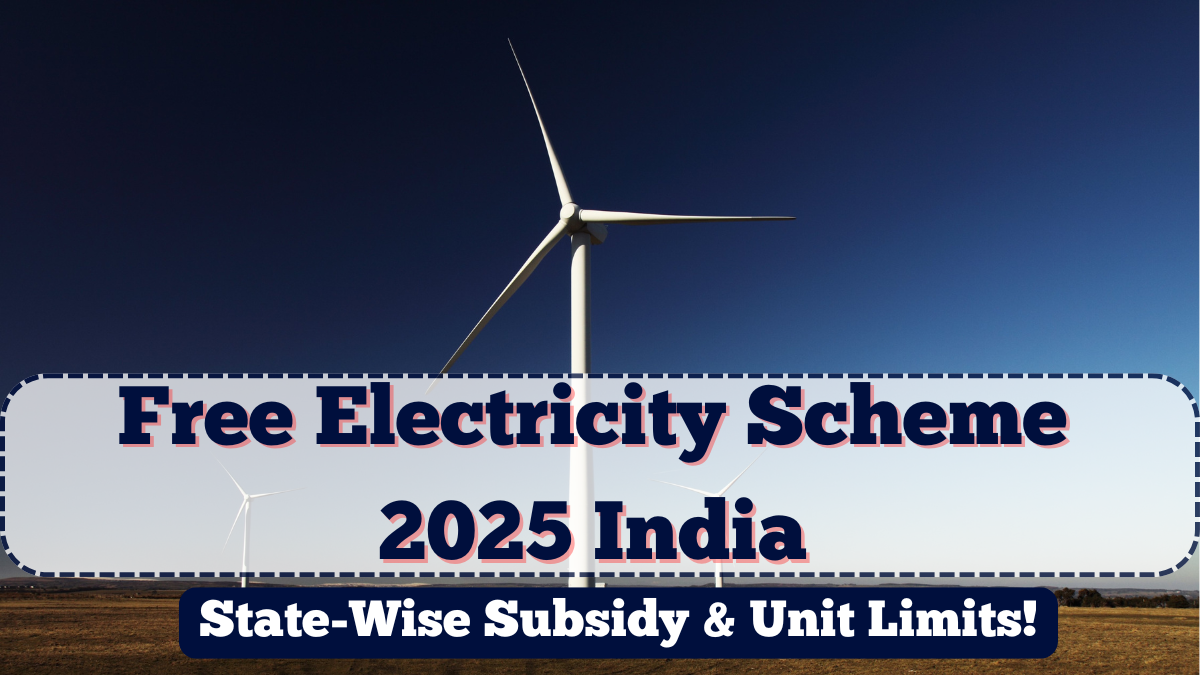The Electricity subsidy scheme 2025 India has officially been rolled out across various states, offering substantial relief to millions of households. The scheme, which is now fully operational, provides free or subsidized electricity to eligible consumers based on income level, household category, and region.
Under this centrally backed yet state-implemented initiative, each state has laid down specific limits for free units, eligibility criteria, and application processes. The Electricity subsidy scheme 2025 India is designed to ensure energy access for all, especially economically weaker sections and low-income families.

State-Wise Electricity Subsidy Benefits for 2025
Here is a simplified table summarizing the current status of free unit allocations under the Electricity subsidy scheme 2025 India:
| State | Free Units Provided | Eligibility Criteria |
|---|---|---|
| Delhi | Up to 200 units | Monthly household usage below 200 units |
| Punjab | 300 free units | All domestic consumers with valid metered connections |
| Tamil Nadu | 100 free units | All domestic users |
| Rajasthan | Up to 150 units | Income-based slabs for BPL and SC/ST families |
| Maharashtra | 100 units for farmers | Registered agricultural users |
| Himachal Pradesh | 125 free units | All domestic users under specified usage cap |
The Electricity subsidy scheme 2025 India has been effectively adopted in over 15 states, with more expected to follow.
Key Features of the Electricity Subsidy Scheme 2025
The scheme ensures that citizens receive uninterrupted power without financial burden. Some of the main features include:
-
Automatic subsidy credited in electricity bill
-
No separate application needed for most states
-
State-specific slabs and unit caps
-
Full or partial subsidy depending on monthly consumption
-
Focused on reducing power poverty and promoting inclusion
The Electricity subsidy scheme 2025 India has empowered lakhs of households with reliable electricity access and reduced monthly utility stress.
Who Is Eligible for the Electricity Subsidy?
Eligibility for the Electricity subsidy scheme 2025 India is determined by:
-
Monthly electricity consumption below the state-defined cap
-
Possession of a valid domestic electricity connection
-
Registered name on the electricity bill
-
Certain categories like BPL, SC/ST, senior citizens, and farmers receive additional support
-
Aadhaar linking and consumption records required for continued benefits
Many states have made the process fully automatic based on your usage and Aadhaar-linked bill accounts.
How to Check and Claim Electricity Subsidy
To benefit from the Electricity subsidy scheme 2025 India, users can:
-
Check their electricity bill for subsidy amount
-
Register on the DISCOM (distribution company) portal if needed
-
Verify Aadhaar and bank details for crediting
-
Track usage and ensure it stays below subsidy threshold
-
Use mobile apps of respective power boards for real-time updates
Consumers don’t need to fill any form in most cases—the subsidy is auto-applied.
FAQs
What is the Electricity subsidy scheme 2025 India?
It is a central-state collaborative scheme providing free or subsidized electricity units to eligible domestic consumers across various Indian states.
How many free units are provided in 2025?
It varies by state. For example, Delhi offers up to 200 units, Punjab offers 300 units, and Tamil Nadu provides 100 units per household.
Do I need to apply for the subsidy?
In most states, no separate application is required. The subsidy is auto-applied based on your electricity usage and Aadhaar linkage.
Can farmers also benefit from this scheme?
Yes, states like Maharashtra and Uttar Pradesh offer specific electricity subsidies for registered agricultural users.
What happens if I exceed the free unit limit?
You will be charged normal rates for any units consumed above the free limit defined under the scheme.
Click here to know more.
